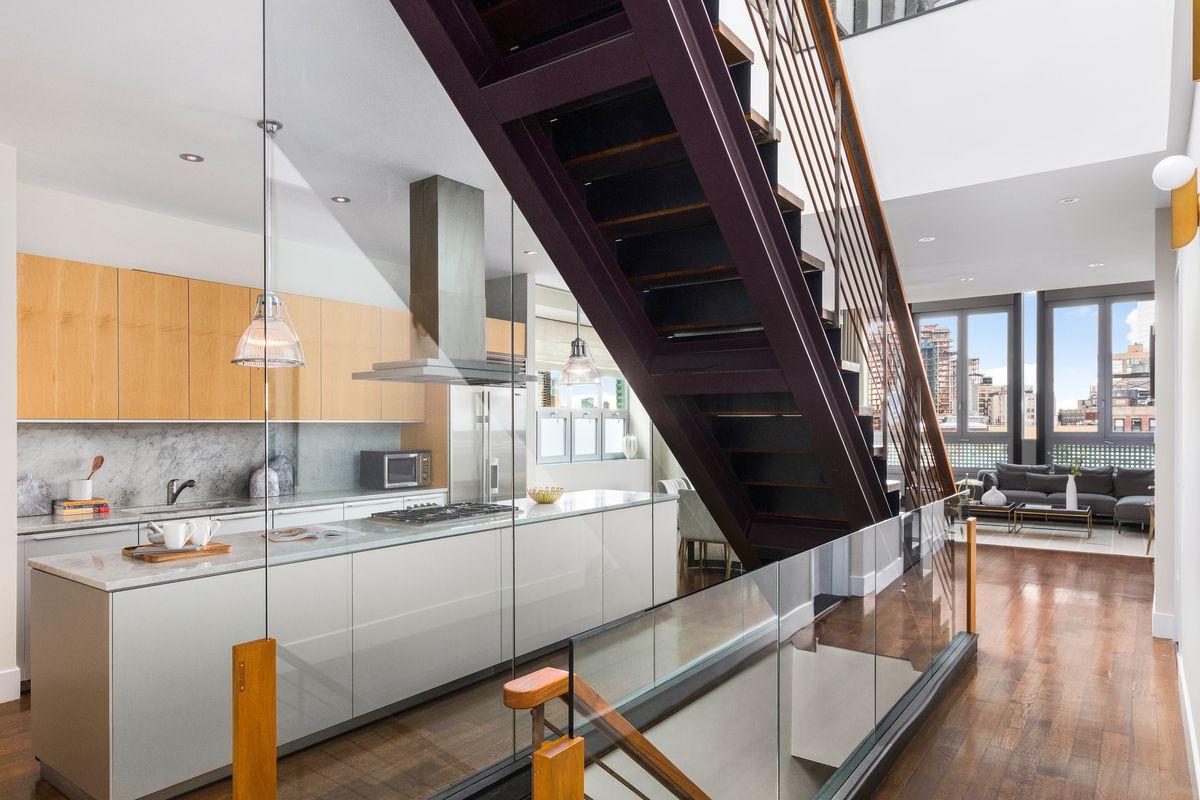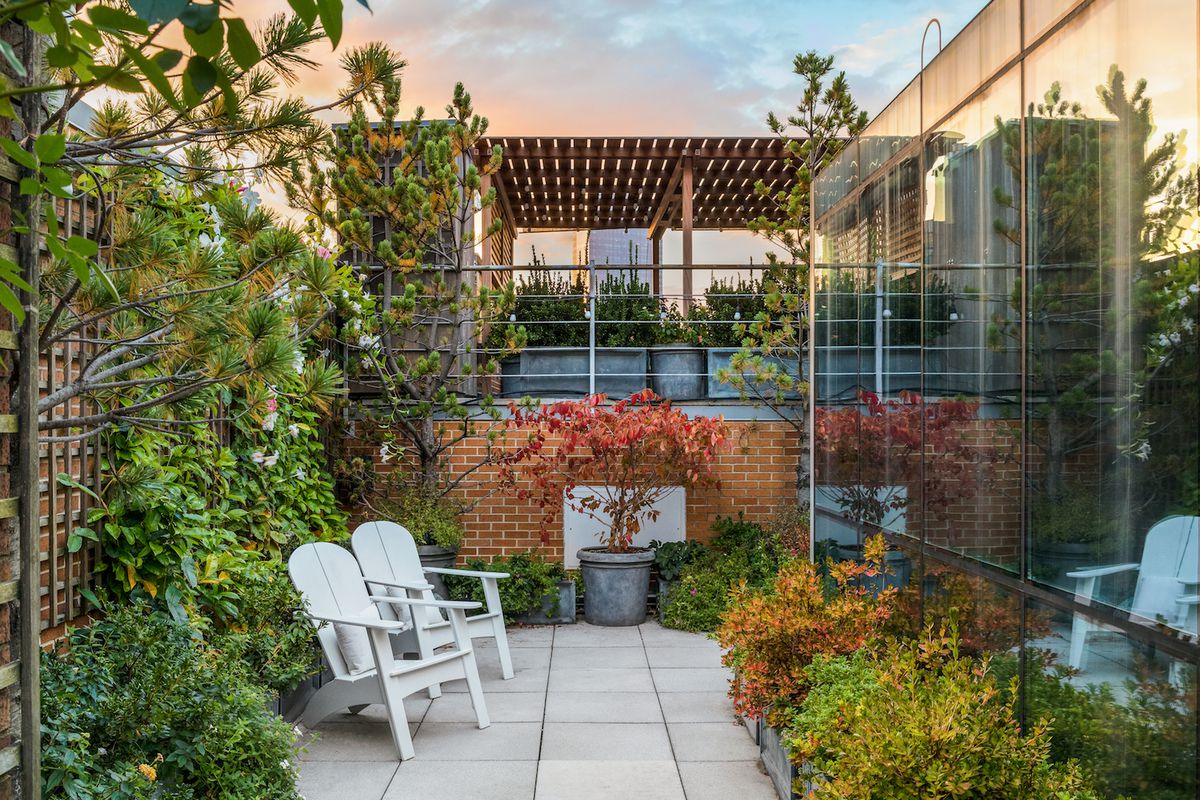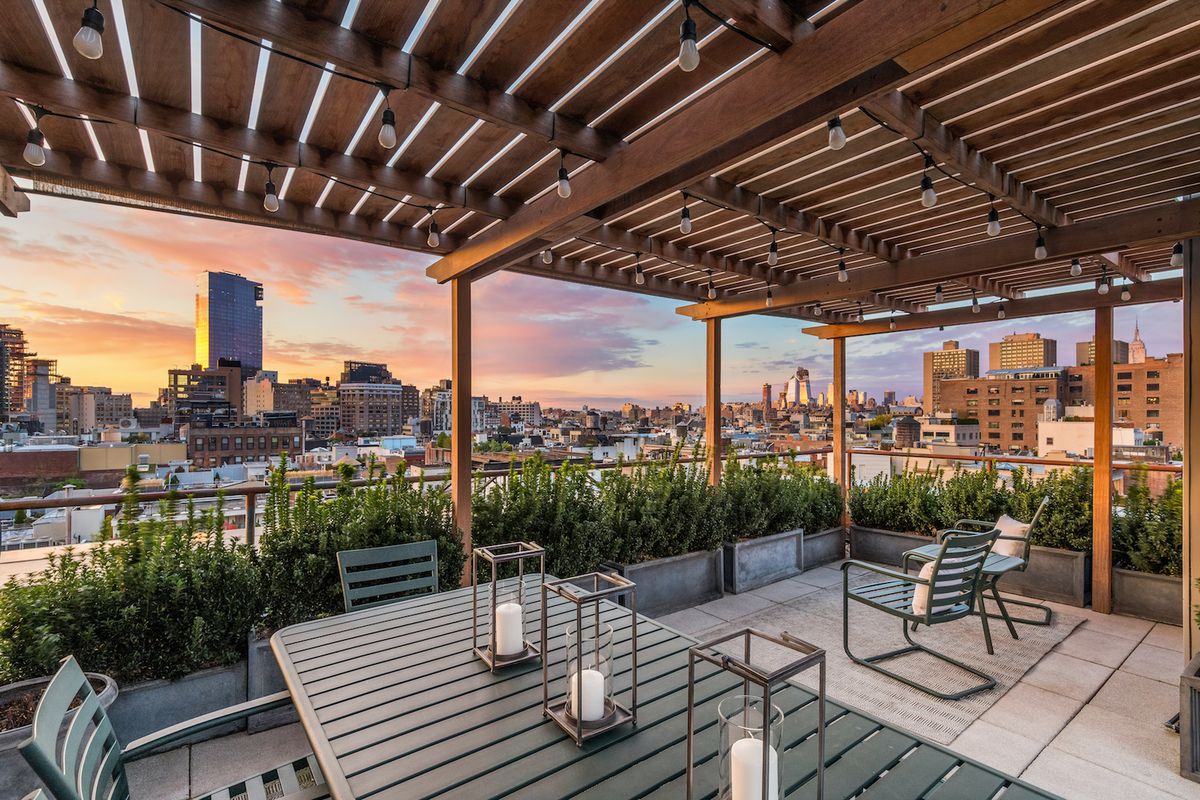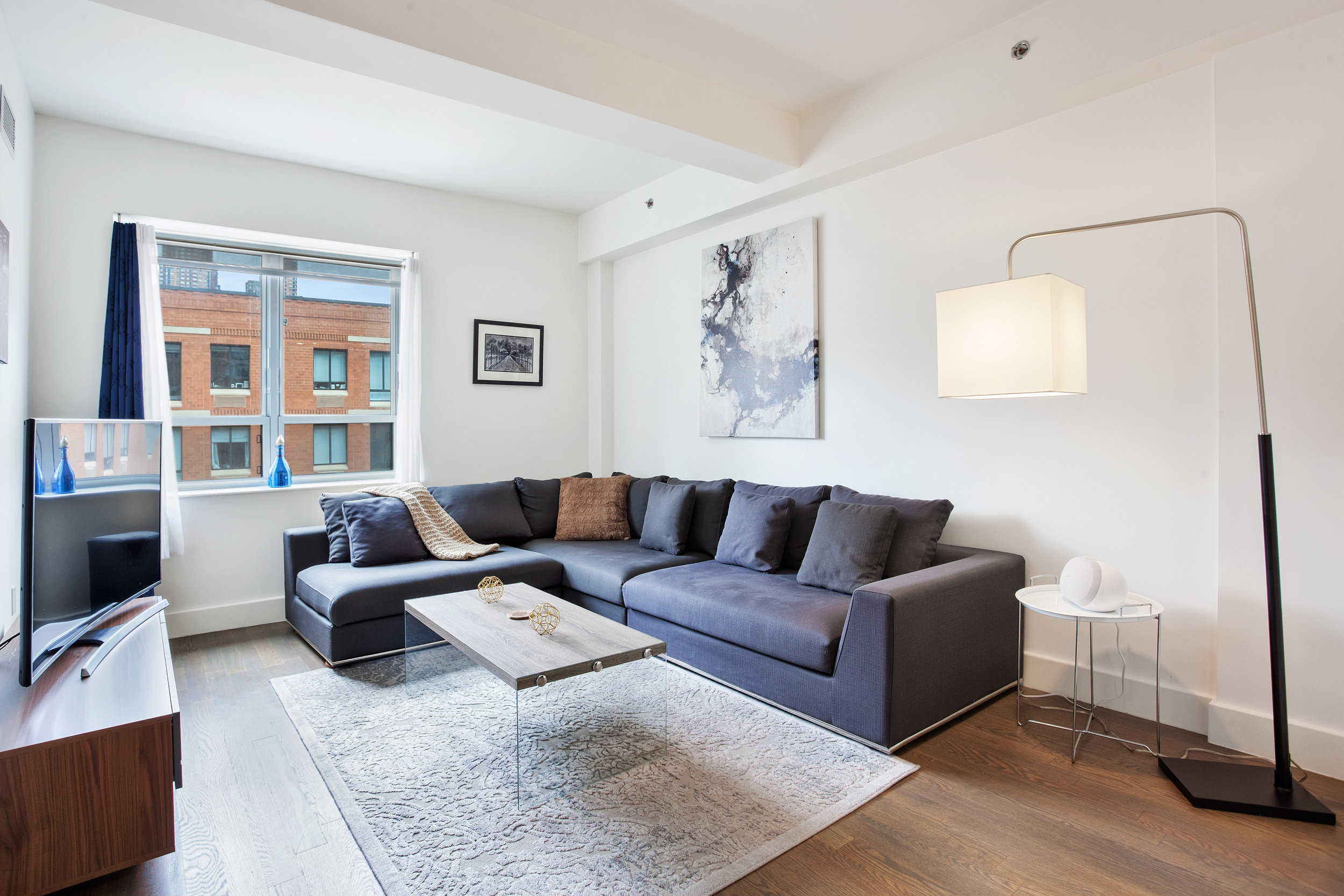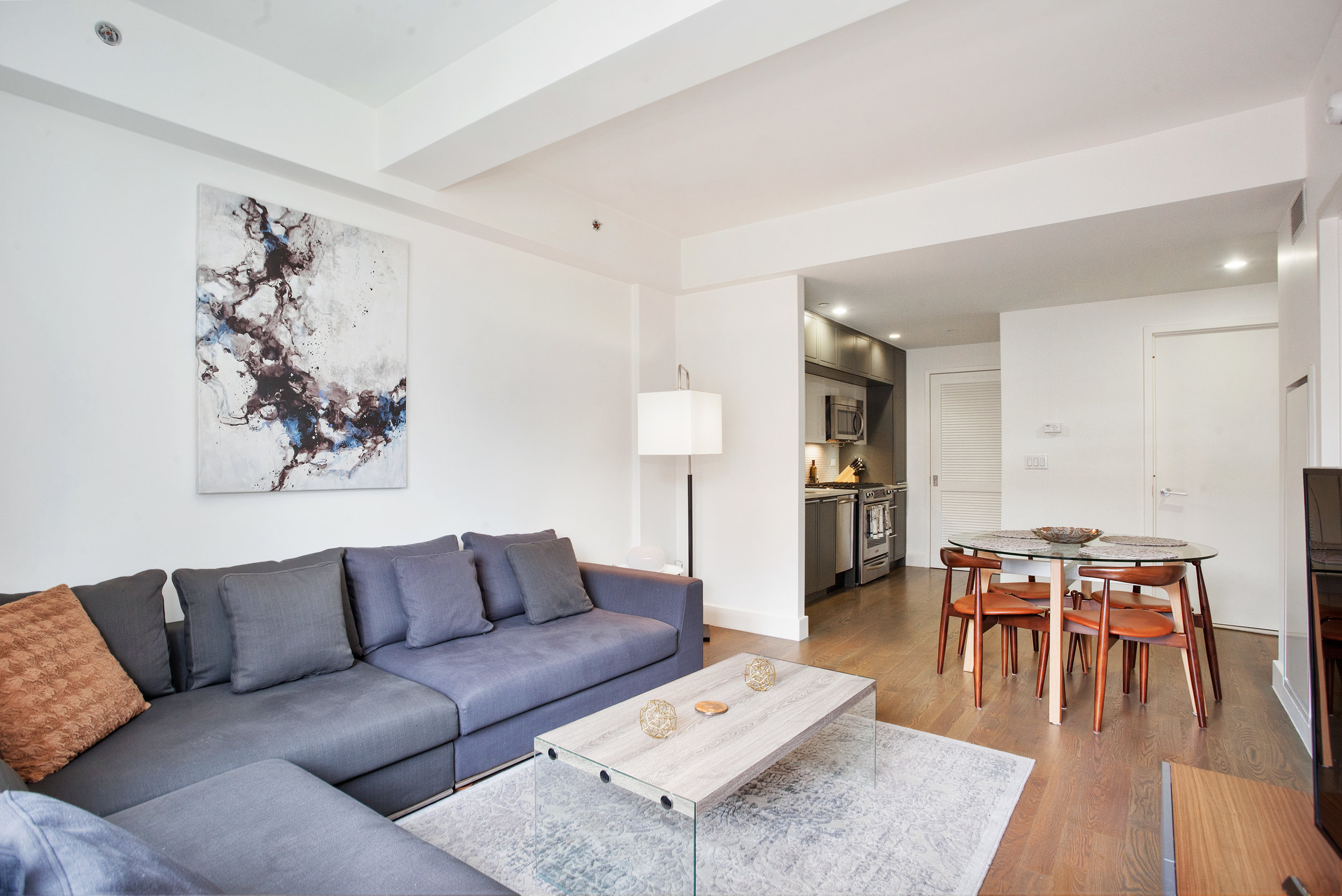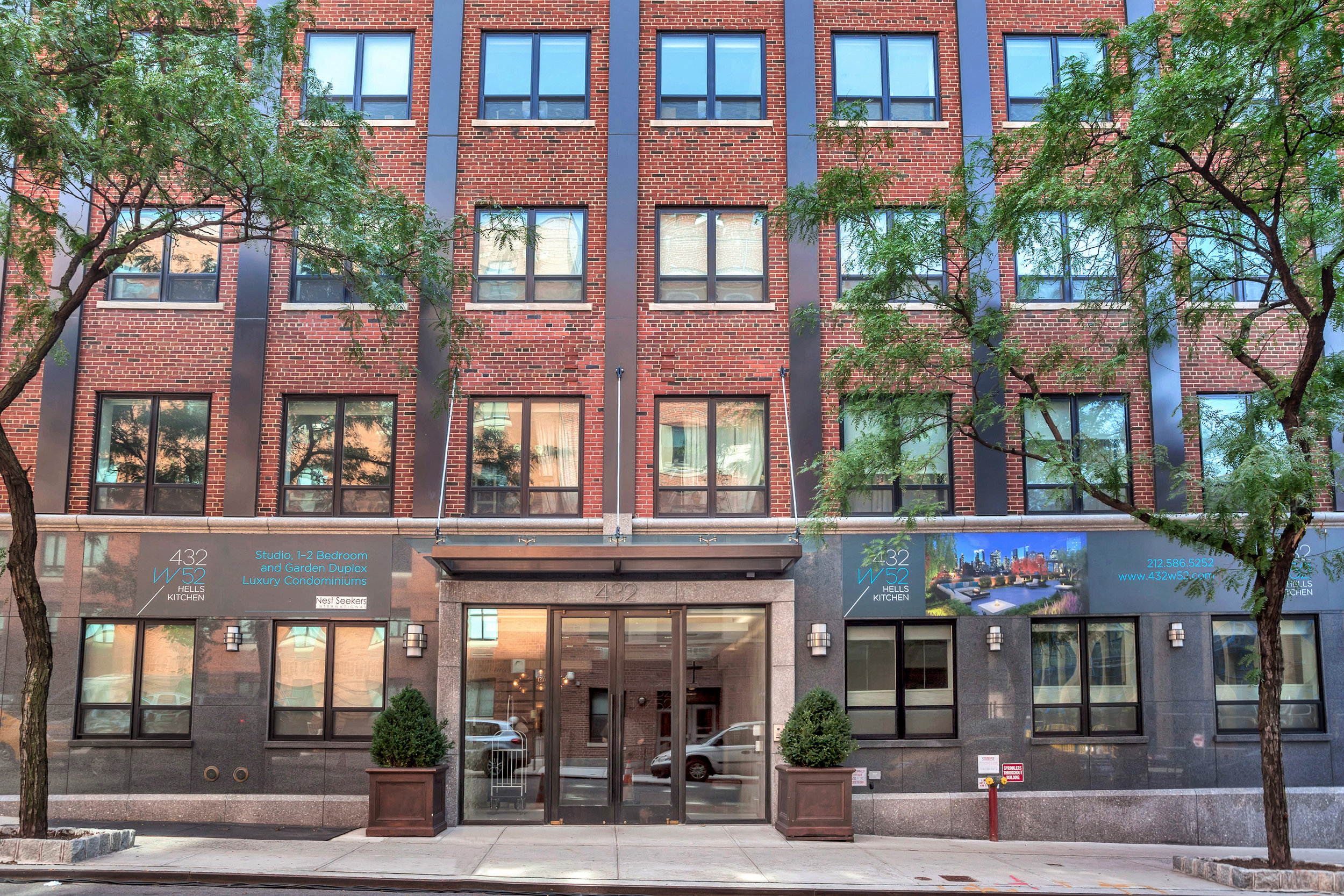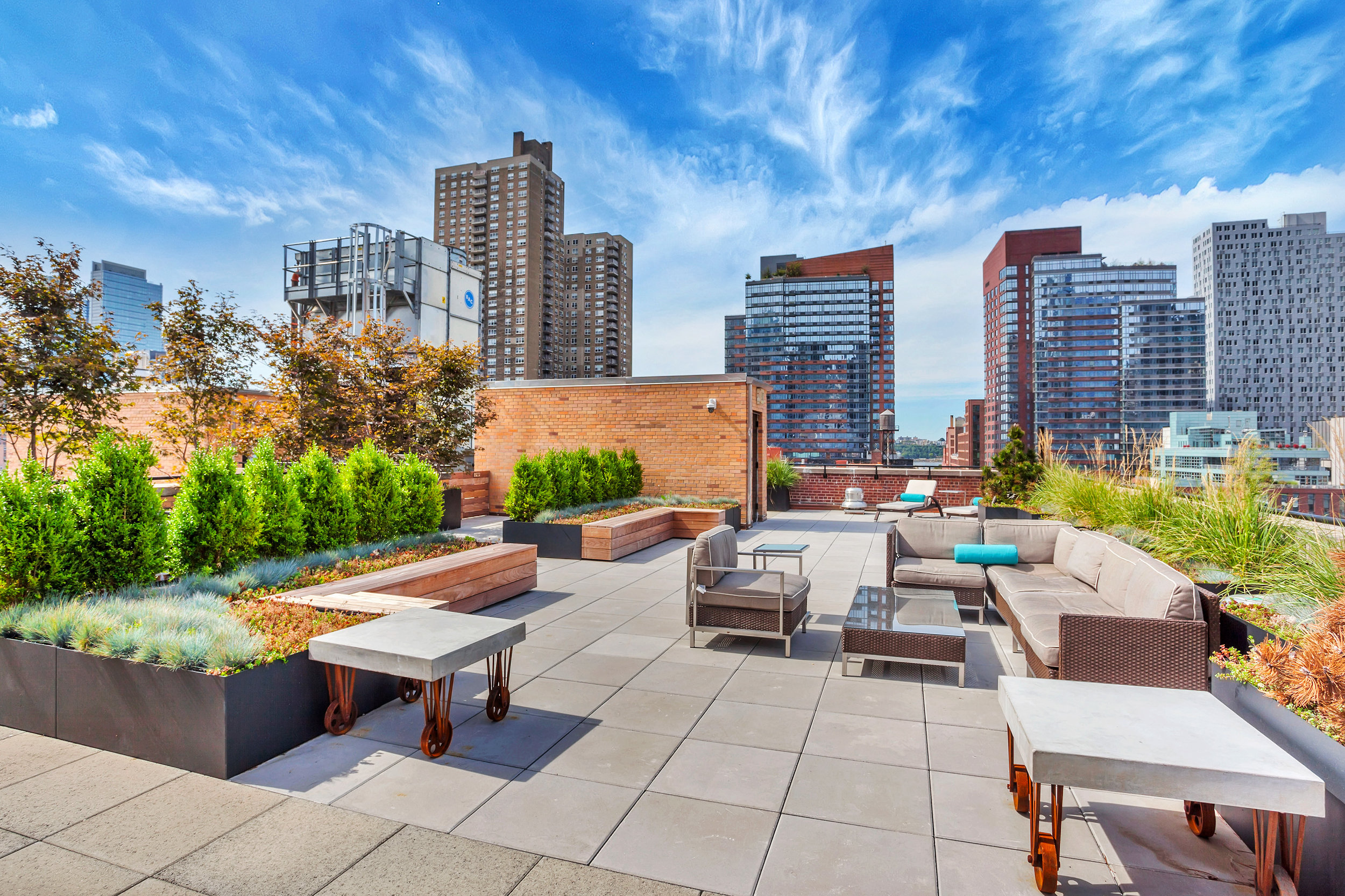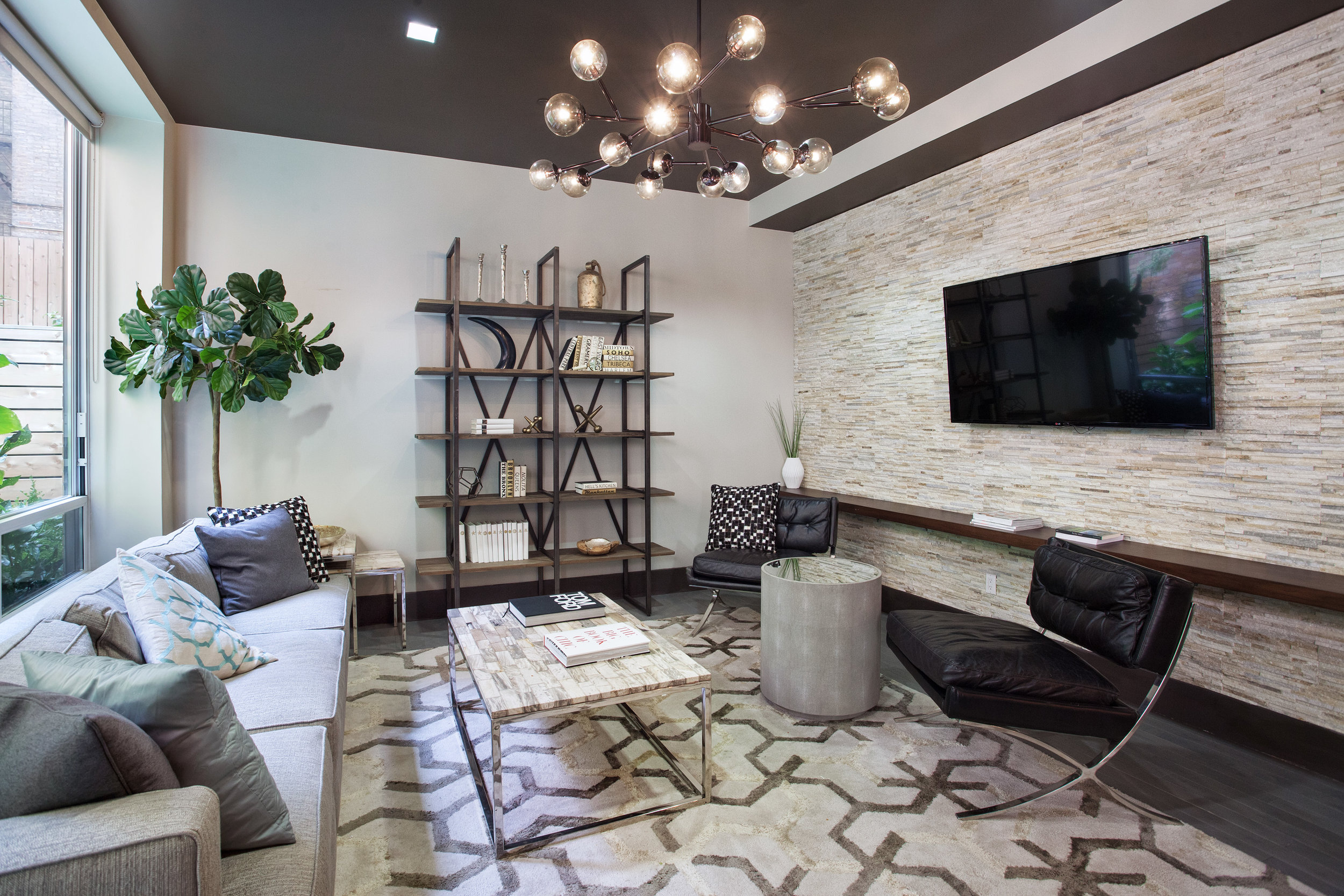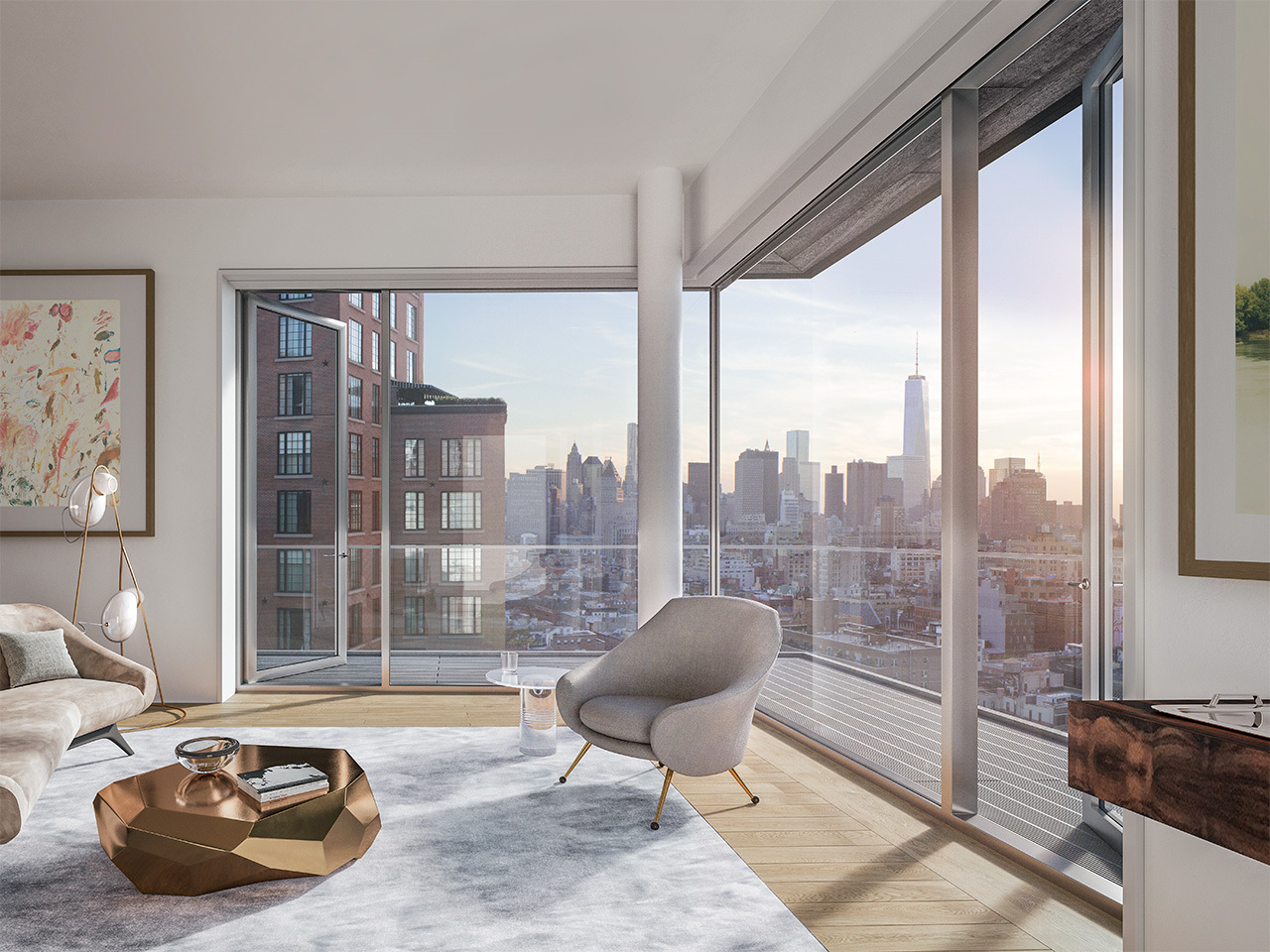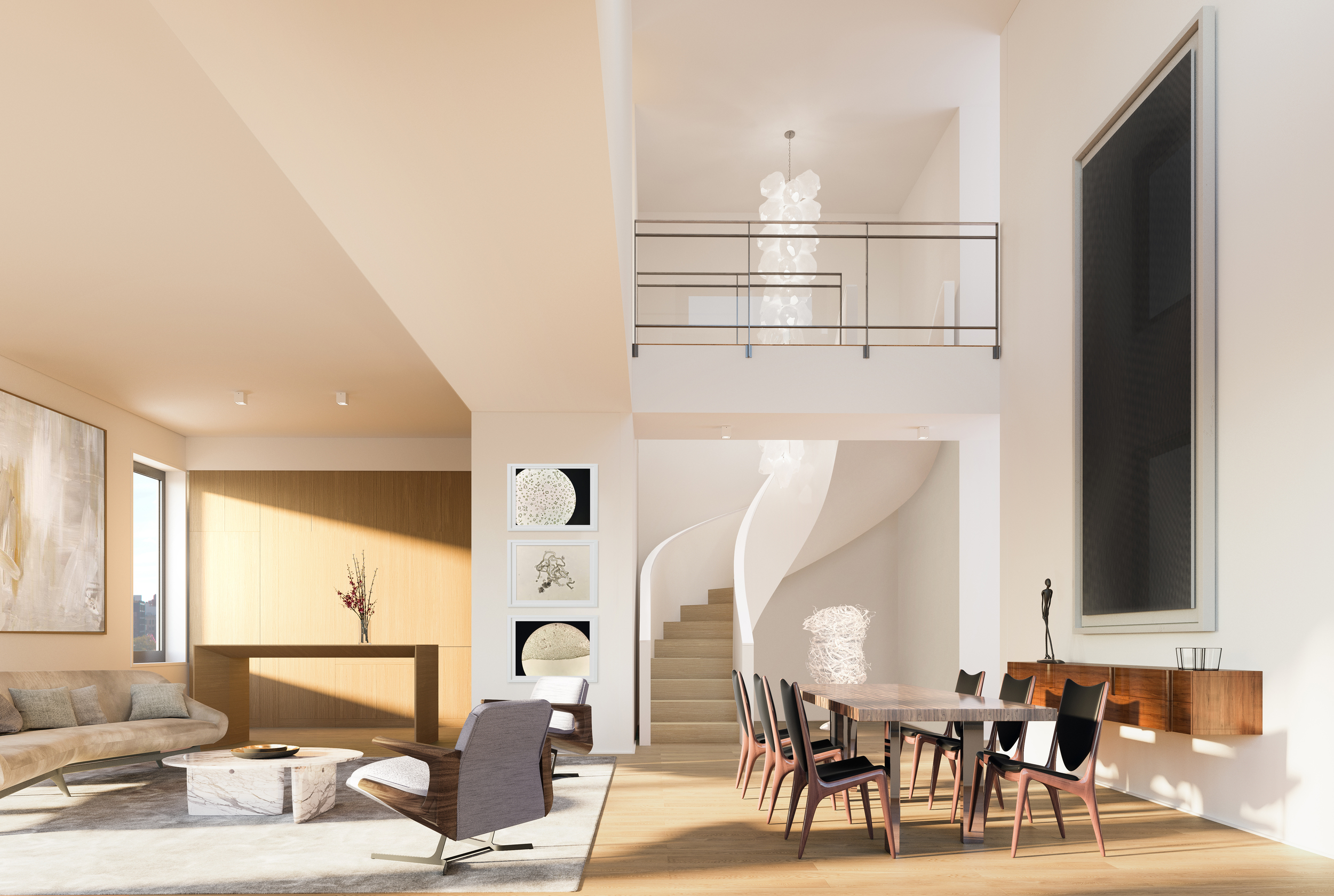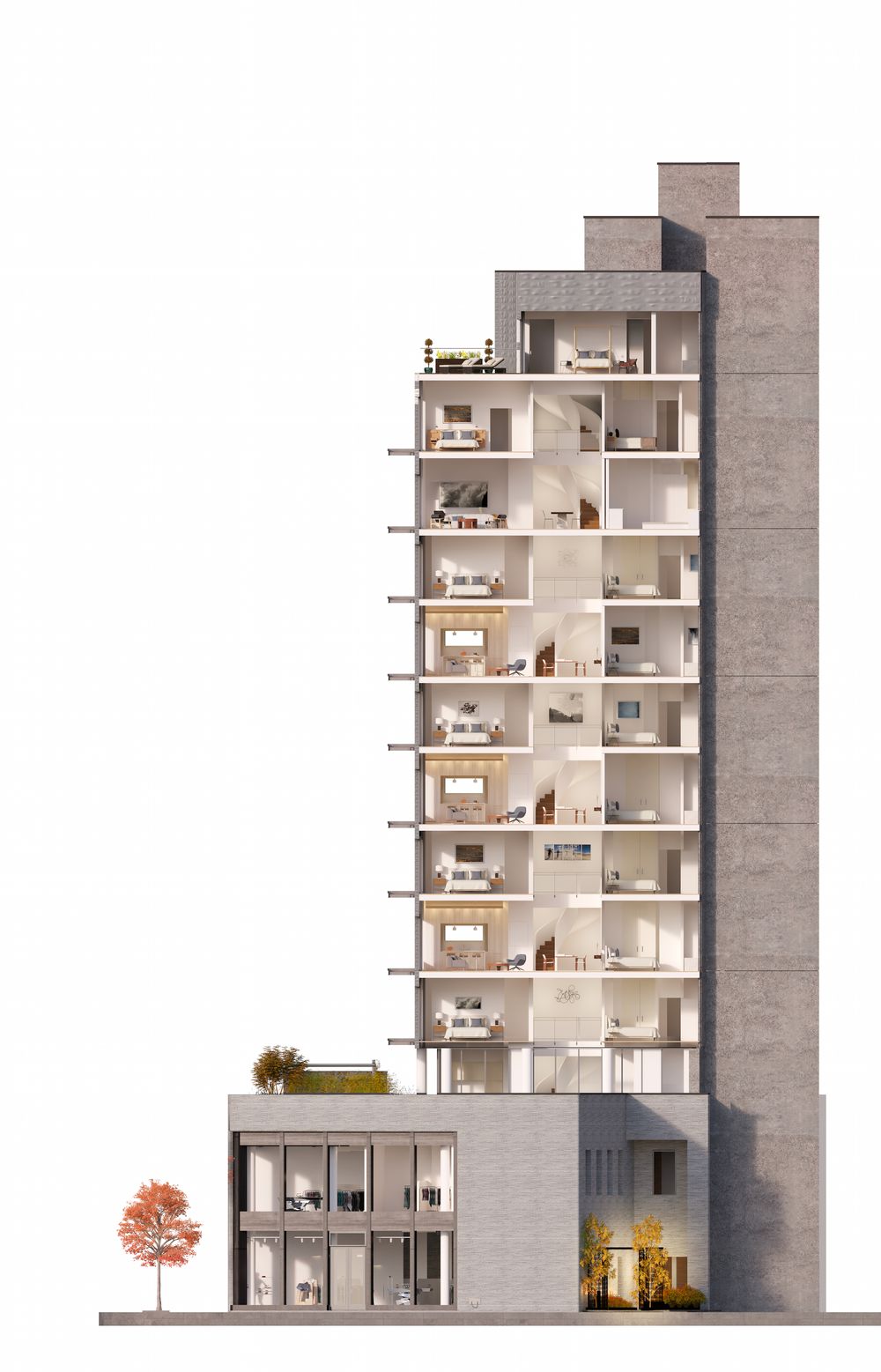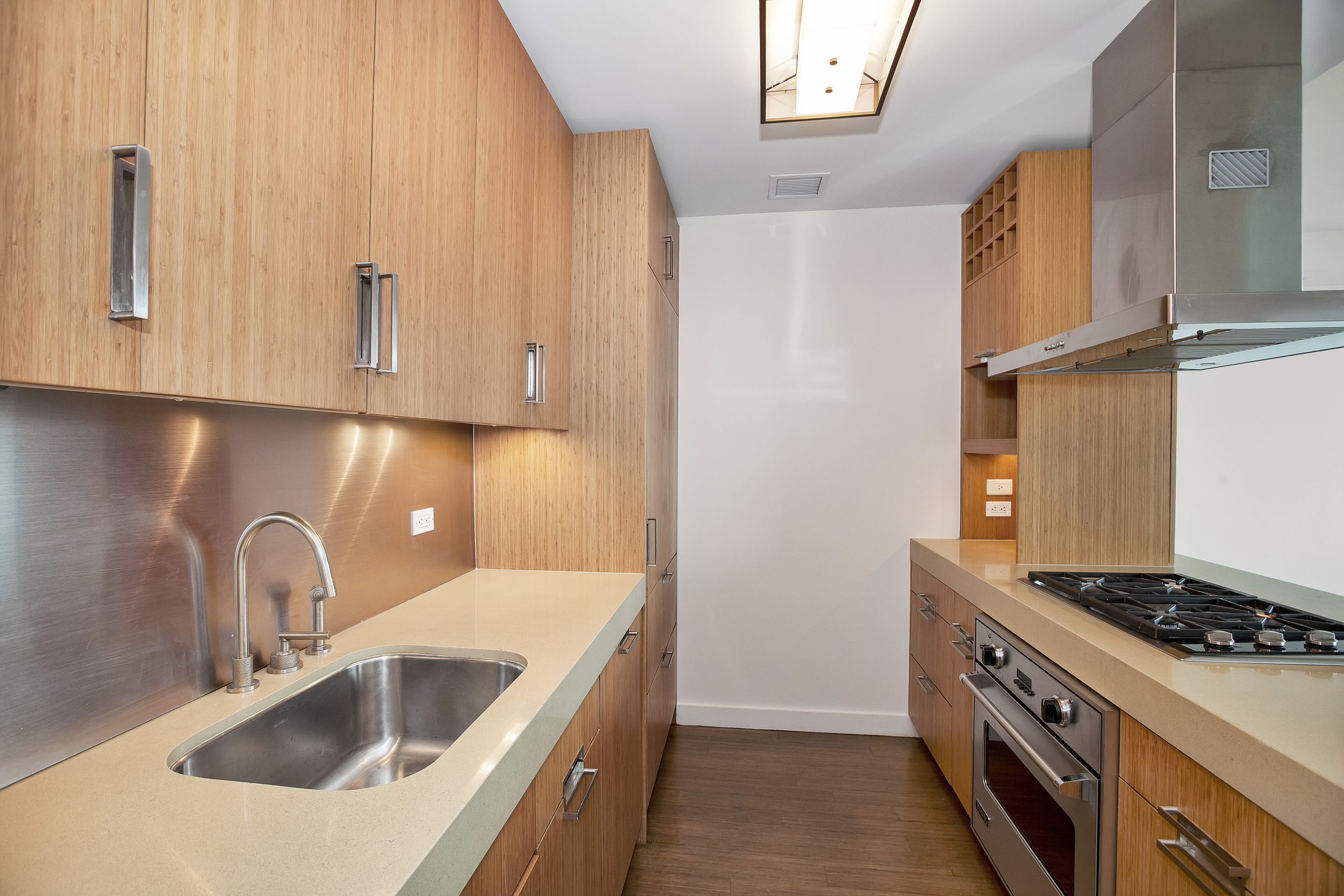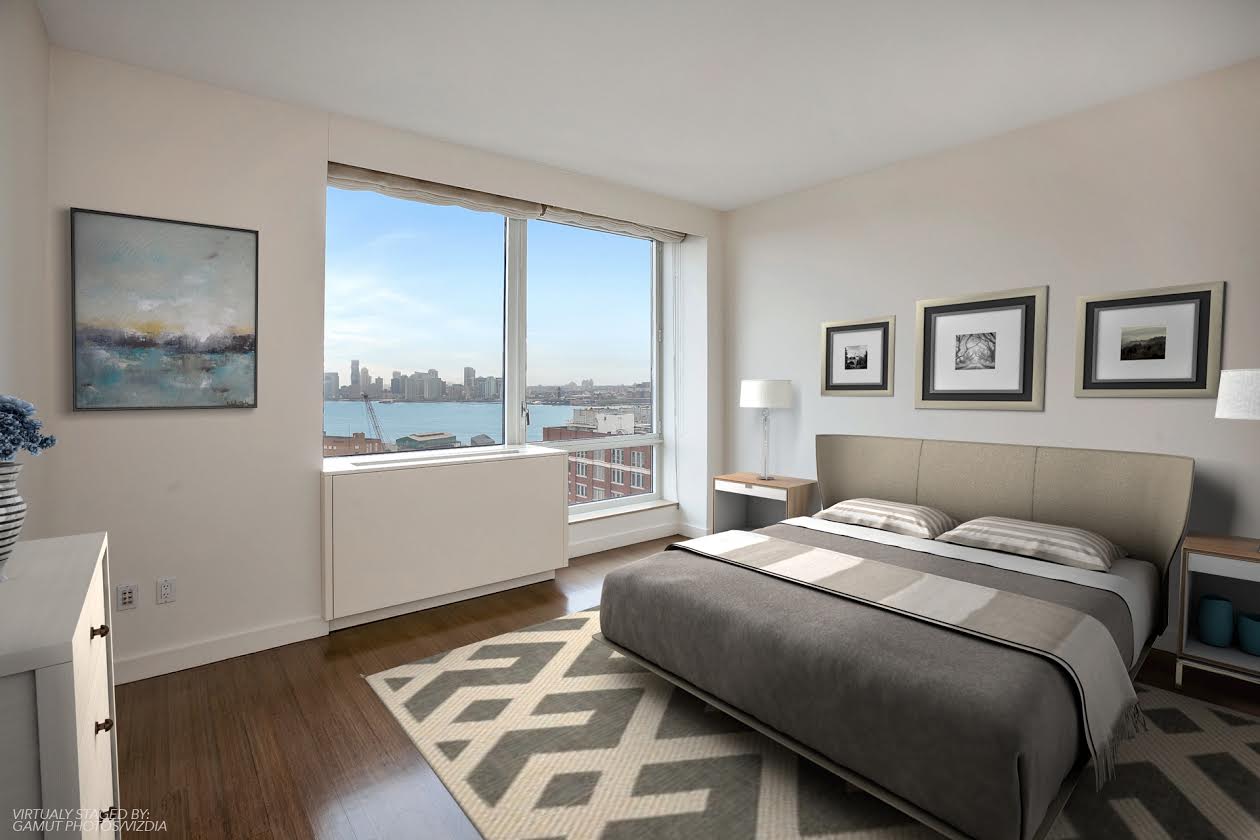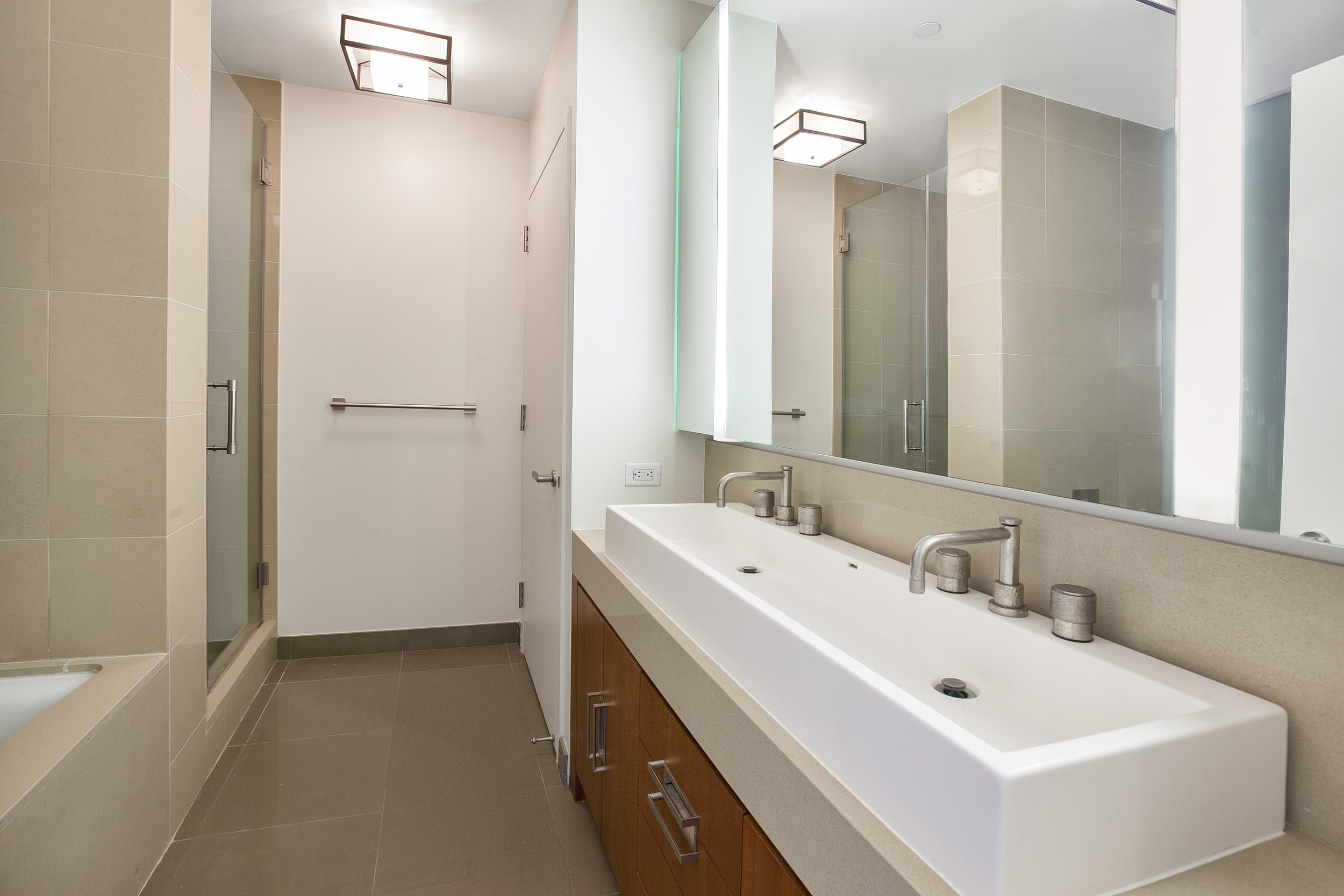The final prototype, in the shape of a magnifying glass, stands tall in a 10th-floor conference room at real estate startup Compass, emitting a gentle glow from the inner rim of its ringed frame. At first glance, the matte-black material and minimalist shape would appear destined for a patio, or inside a home. In fact, if it weren’t for the real estate agent contact information in the center of the glowing ring, it would be hard to call this a “for sale” sign. But that is exactly its purpose: to broadcast to buyers that a home is on the market, and, thanks to embedded technology, to give them access to a far richer set of information than a standard printed sign can contain.
In the presence of this final prototype, after months of development, Matt Spangler, Compass chief creative officer, can barely contain his excitement. In jeans and a denim shirt, he detaches the ring from its base, to show how they connect. “The whole thing is modular,” he says. “This piece right here—this slides out.” With the click of a button, he animates the LED lights, which cascade down the sides of the ring. Turning the sign around, he demonstrates how to detach the printed piece in the center, using subtle tabs. In the future, if cost allows, he envisions a fully digital version that agents can update in real time. Right now, Compass’s mobile development team is making plans for an augmented reality iteration.
“Say it was just a plot of land—you could see a house modeled on the land, you could change the color of the house with paint, you could see all the neighborhood data, you could see restaurants that are recommended,” Spangler says, painting the vision.
BRINGING NEW TECHNOLOGY TO A HIDEBOUND INDUSTRY
In other sectors, the merging of digital and physical worlds is well underway. We wear devices that monitor our steps and our sleep, we shop while in-store sensors track our movements, and we manage our homes using Silicon Valley-designed thermostats and security cameras. But when it comes to buying a home, technology is limited to online aggregators, like Zillow, that replicate the functionality of old-fashioned classified ads. Compass, which raised $450 million from the Softbank Vision Fund in December at a $2.2 billion valuation, has until now focused on becoming, in the words of CEO Robert Reffkin, “the largest owner of real estate data, globally, and the number-one real estate technology company in the world.” The company’s reimagined “for sale” sign speaks to a growing recognition that real estate’s most valuable data originates in the real world.
Of course, for many Americans today, the idea of buying a home is as fantastical as using AR to “paint” a home’s exterior. Prices have skyrocketed in many of the cities where Compass operates, while middle class wages have remained stagnant. But for Compass, those rising prices present an opportunity to own the cutthroat top of the market. The company has poached talent capable of annual sales in the eight digits from competitors including Corcoran Group and Douglas Elliman.
Compass agents sell trophy properties and are willing to invest in trophy-worthy tools, or so the thinking goes. The startup expects that its 4,100 agents will snap up the first run of signs; each one will cost roughly $1,000 and ship October 1. (As long as agents charge the batteries, signs can, in theory, last for years.) During feedback sessions, Compass says, over 90% of agents expressed interest in buying one.
“The first thing I want to see is agents happy because sellers are saying, ‘That made my house stand out,'” says Compass COO Maëlle Gavet. Plus, she adds, the technology will make it easier for agents to manage their sign inventory. “‘I know where my signs are, I know if one of them needs to be recharged.’ In the future, ‘I don’t need to go to the sign to change the wording.'”
As an added incentive for agents to place an order, Compass has negotiated a deal with Waze that will showcase sign locations within the Waze app, encouraging prospective buyers to drive by or attend an open house.
“You could imagine a world in which you decide as a consumer that you’re looking for these types of properties, and a map starts creating a route, and it knows which ones have an open house,” Gavet says. “It’s a bit of a dream, but this is what I find really exciting—you start connecting the digital world and the physical world, and that makes the life of the consumer hopefully a little better.”
A NEW VISION FOR A NEW ERA OF HOUSING
The last time that the “for sale” sign went through a major transformation was decades ago, during the post-World War II suburban boom. My own grandfather, Bill Oakley, was on the vanguard of the new trends. Around 1970, he left the Chicago-based printing company where he worked to strike out on his own with a new kind of real estate signage. At the time, two types of “for sale” signs dominated: sandwich-board styles and rectangular styles affixed to a central metal post. Using newer, lighter materials, Oakley created an L-shaped frame, with a hinge affixed to the horizontal bar at top. The design allowed real estate agents to easily swap in different prints, as needed. His first client was the real estate arm of Better Homes and Gardens.
During Oakley Signs and Graphic’s early years, buying a home in the U.S. was both affordable and desirable. In 1983, the year I was born, roughly two-thirds of Americans owned a home, up from a low-point of 44% in 1940. But these days, buying a home is increasingly out of reachfor many Americans. Homeownership rates have been in decline since the Great Recession, when banks pulled back their mortgage lending. In high-demand markets like New York and San Francisco, average home prices top $1 million.
Enter Compass, which assumes that “luxury” is the new normal in residential real estate. The startup has prioritized recruiting agents in wealthy enclaves like Aspen and the Hamptons, and in markets like Chicago has won listings such as a $50 million, 25,000-square-foot urban mansion (“grand in every way, but not overwhelming,” the description reads). For such properties, the company believes, a regular-old “for sale” sign just doesn’t strike the right note with wealthy clientele.
THE QUEST FOR SMART AND ICONIC SIGNAGE
Compass’s attempt to reinvent real estate signage kicked off last November at the offices of Aruliden, a branding and design firm hired by Spangler. Dozens of sketches line the walls of a conference room in New York’s Flatiron neighborhood, many showing variations on a circle attached to a narrow pole. As mood-board inspiration, the Aruliden team has printed out images of glowing round lights in minimalist living rooms. The goal, in a sense, is to create an exterior sign as elegant as a piece of modern furniture.
Johan Liden, Aruliden cofounder and chief creative officer, leads the presentation, which focuses on the team’s initial research and discovery. “This is a category that hasn’t changed in a long time,” Liden says. As a result, there’s an opportunity for Compass to create a sign that is both “smart” (i.e., tech-enabled) and “iconic.” He points to examples of branded hardware that bridge the physical and digital worlds—Lyft’s dashboard lights, for instance, or Disney’s Magic Band. “You should be able to remove the Compass logo and know that this is a Compass sign,” he says, as heads nod.
Several weeks later, Spangler has had a chance to ruminate on the design options and the sign’s ever-expanding function. “I want to challenge everyone to imagine a world in which the sign is a smart-home hub,” he says. “It’s sending information about air quality and noise pollution, it’s helping open doors for tours, it’s giving you the tour, and then it’s providing actual value to the agent, the buyer, and the seller.” The way that we live is changing, and Spangler wants Compass to be ready for a world in which home “ownership” is more flexible. “More homes are going to be Airbnb-style homes and rentals, mobility will be greater than ever. How can we be at that hub with the other technology players?”
He is conscious of the practical considerations. “To me the toughest challenge is how far can we push the technology today to get it done on a reasonable time frame, with a reasonable cost, to provide a real wow factor and real functionality. We want to get there. Can we get there today?”
GETTING THE LITTLE THINGS RIGHT
In February, that challenge comes into focus during a meeting at Compass headquarters attended by Aruliden and a newly hired team of hardware contractors from Intelligent Product Solutions (IPS). Questions begin to fly, as the contractors review the preliminary designs. Who can use the data? When and how? What about battery life?
“I don’t see a need of live-streaming this data anytime soon,” says Compass CTO Liming Zhao (Zhao left Compass in March to start his own company). But he wants to prioritize gathering data points—like foot traffic, noise, and light—that could improve Compass’s valuation tools, part of the startup’s suite of agent software. “Are there other reasons this home is more attractive?” With the right sensors, his team could bring new insight to one of real estate’s most important questions.
Moving on, the group discusses motion sensors, and whether they make sense in dense, urban settings. They also consider adding red and green lights, to convey that a home is sold or still available. But members of the Aruliden team are skeptical about more complex signals and messaging. “How often do you buy a house?” one says. “A red or green light won’t mean anything to you.”
As the meeting draws to a close, the group agrees to reconvene when the hardware vendor can provide estimates on timing and cost.
By April, there is finally a prototype. It’s a slender pole topped with a circle, around five feet tall. In the center, there is sample text: “Townhouse for sale,” the sign reads, followed by a broker name, contact details, and “Compass.” At the base of the ring, there is now a QR code, which will prompt passersby to download the Compass app.
The meeting begins as Aruliden presents options for animating the LEDs. Should the sign turn on automatically at night? If so, how bright? During the day, what should happen when a person approaches and passes with a 10-foot radius? Six feet? Three feet?
One attendee raises the question of riders, the printed add-ons that agents often use to augment their standard signs. Liden, Aruliden’s CCO, would like to convince agents to embrace the sign’s minimalism. “Could the rider information live more in the phone?” he asks.
The Compass team is hesitant. “We need to test with agents.” Many agents, they believe, will be resistant.
IPS takes the stage, and immediately the idea of using sensors to trigger light animations becomes more complicated. The current plan calls for two sensors, but that will create “blind spots.” Adding a third sensor will affect battery life. “It’s the one thing we can’t turn off,” says one IPS engineer.
“There are obviously going to be scenarios where it will not engage,” Liden acknowledges. “But what is acceptable, as a percentage?” He and the team have envisioned a scenario in which an interested buyer walks by the sign, which activates the LED animation, which serves to draw attention to the QR code, which leads the buyer to information about the property. “This is key for the sign to do what we want it to do.” If the sensors don’t initiate that sequence, then the agent has lost a chance to connect.
In the end, the final prototype contains just two sensor boards, each with the capability to detect proximity and ambient light. In addition, there is a circuit board that contains a micro-controller, a Bluetooth Low Energy module, an accelerometer, and a temperature sensor. Through the Compass app, agents will be able to select from a variety of light animations and monitor battery life.
“It’s a connected ecosystem of devices, with hardware and software and data,” Spangler says. “Which is really the power of Compass—the integration between all those things.”
THE NEXT STEPS
Now, the company will have to convince agents of that ecosystem’s value and sweet-talk municipalities with stringent rules governing signs. (Some towns in the Hamptons, for instance, tightly restrict the size and color of signs, as well as the use of light.) Spangler, Gavet, and Reffkin are also eyeing other opportunities to build for the physical world. “We’re having the same conversation around [real estate office] windows—we think we can do better,” Gavet says. “We want to be different, we want to look different.” The opportunity, she believes, lies in connecting physical places to digital marketing strategies. “Real estate is where e-commerce was 10 years ago.” But the window redesign is a project for another day.










